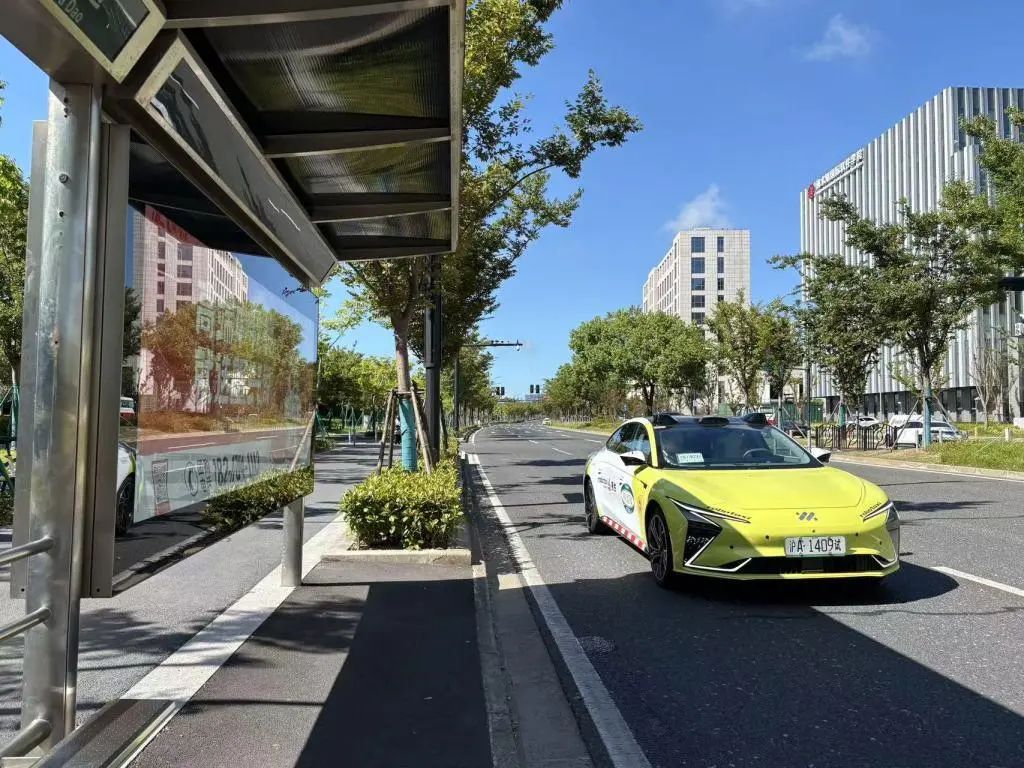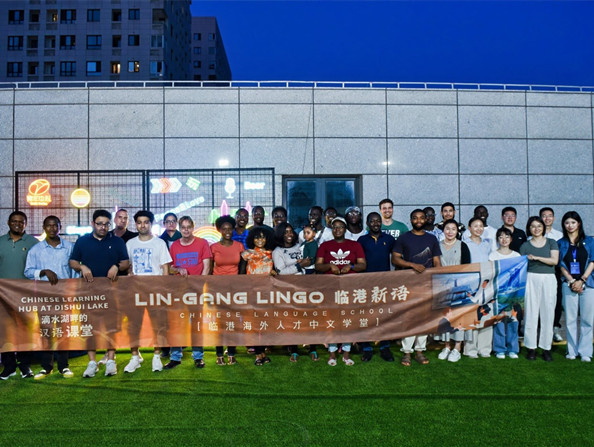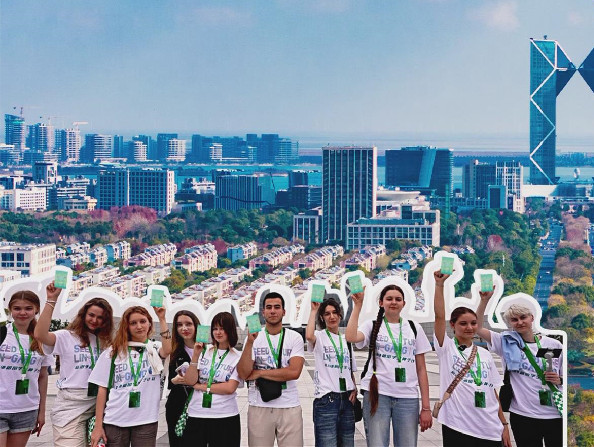First group of robotaxis in Lin-gang begin commercial operations
The first group of driverless intelligent connected taxis, also known as robotaxis, in Shanghai's Lin-gang Special Area began commercial operations on Aug 15, marking a step forward in the large-scale commercialization of autonomous driving applications.
Covering 58 locations, including universities, office buildings and commercial sites in Lin-gang's main area, the service is available from 8 am to 8 pm. Passengers can book a ride through the WeChat mini-program named "Lin-gang Travel" (临港出行).
Passengers must confirm the robotaxi's plate number and other information before opening the door, and can only sit in the back seat with their seatbelt fastened before starting the journey via a display screen behind the backrest of the co-pilot seat.
Pricing starts at 16 yuan ($2.23) for a trip under 5 kilometers, with 4 yuan per km for distances beyond that, and no additional fees.

A robotaxi in Lin-gang Special Area. [Photo/thepaper.cn]
During the 2025 World Artificial Intelligence Conference in July, a new batch of demonstration operation licenses for intelligent connected vehicles was issued to companies like Shanghai Youdao Zhitu Technology Co, based in Lin-gang.
Covering smart taxi and intelligent freight services, the newly issued licenses are expected to further boost the large-scale commercialization of L4-level autonomous driving technology in China.
Lin-gang has opened 245 roads spanning 551.7 km for autonomous driving tests within its 386-square-kilometer industry-city integration area. A total of 364 vehicles from 22 companies have conducted road tests, demonstration operations, and driverless tests. Licenses for driverless road testing have been issued to 41 vehicles from five companies, with 14 of them also approved for demonstration operations.
Beyond taxi services, Lin-gang is also testing driverless services from its main urban area to Shanghai Pudong International Airport and is developing autonomous buses and intelligent trucks for port logistics.
Moving forward, the area plans to further advance the large-scale commercialization of driverless services while ensuring safety through improved regulatory frameworks and technological support.
-
Address No 200 Shengang Avenue, Pudong New Area, Shanghai, China
-
Zip Code 201306
-
TEL +86-21-68283063
-
FAX +86-21-68283000




 Experience melodies of Lin-gang Special Area with SHCM international students
Experience melodies of Lin-gang Special Area with SHCM international students
 Lin-gang Special Area opens Chinese language school for expats
Lin-gang Special Area opens Chinese language school for expats
 Explore a 15-minute high-quality living circle in Lin-gang Special Area with SUFE intl students
Explore a 15-minute high-quality living circle in Lin-gang Special Area with SUFE intl students


